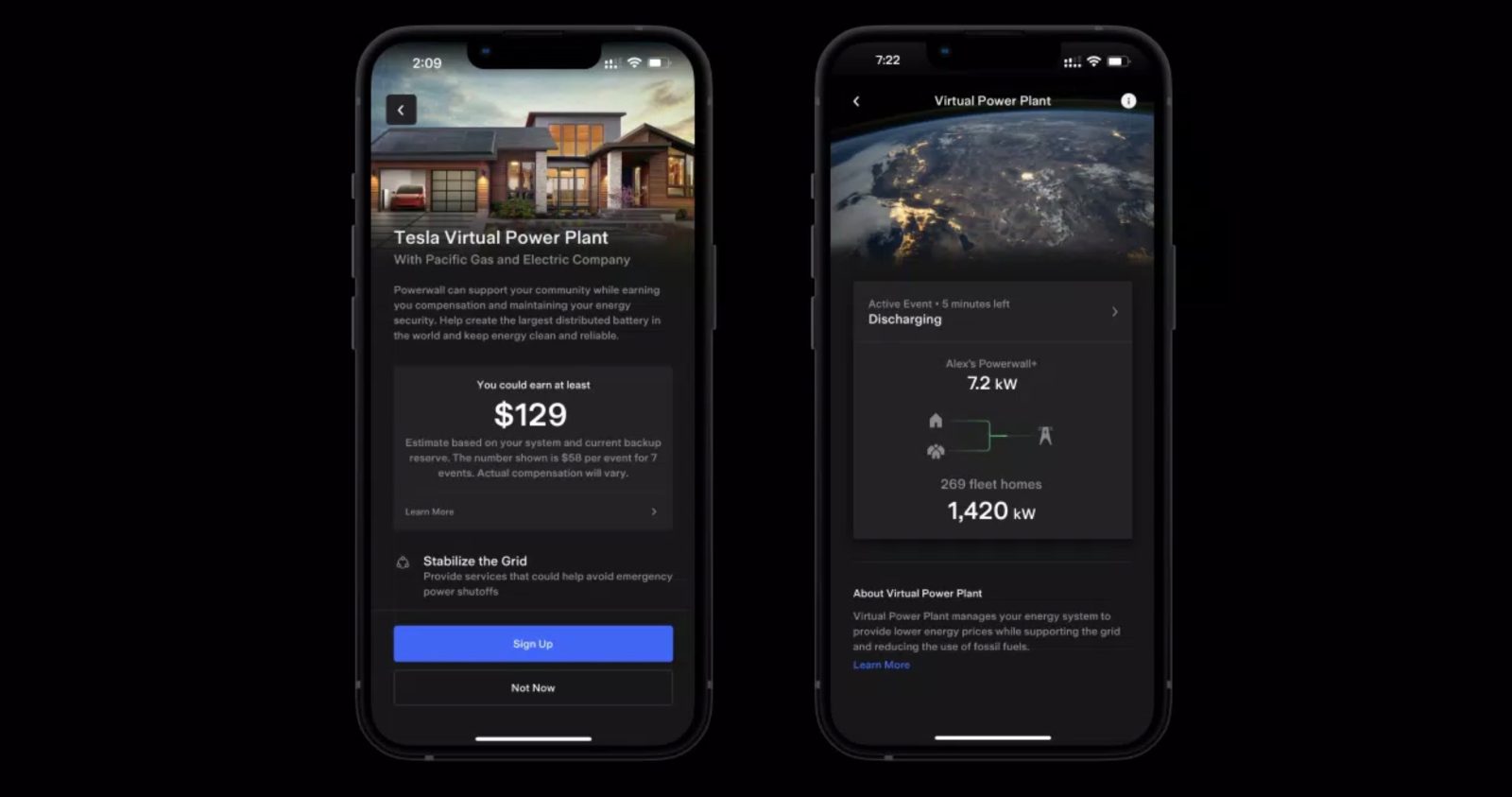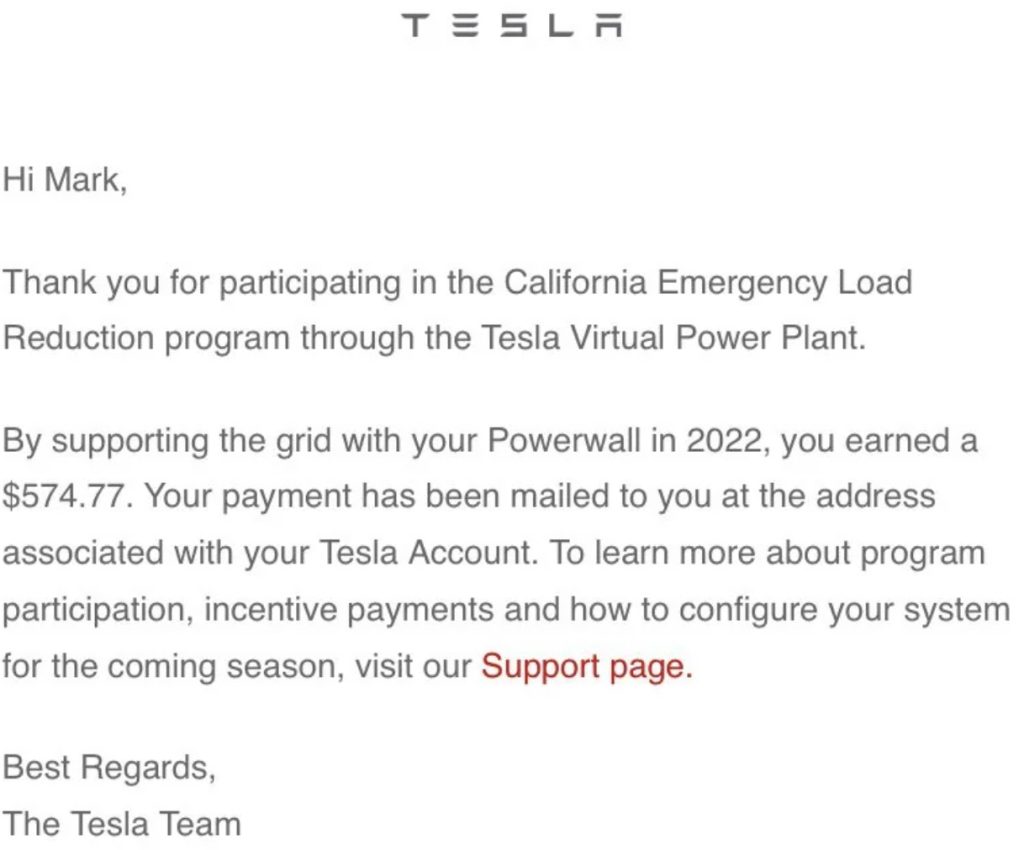
Tesla Powerwall owners in the California virtual power plant report making up to $500 in the first year of the new program despite launching only in the summer.
It looks like it could be a real way to lower the cost of owning home energy storage.
A virtual power plant (VPP) consists of distributed energy storage systems – like Tesla Powerwalls – used in concert to provide grid services and avoid the use of polluting and expensive peaker power plants.
In 2021, Tesla launched a VPP pilot program in California, where Powerwall owners would join voluntarily without compensation to let the VPP pull power from their battery packs when the grid needed it. It helped Tesla prove the usefulness of such a system.
Following the pilot program, Tesla and PG&E (the electric utility covering Northern California) launched the first official virtual power plant through the Tesla app with compensation in June.
This new version of the Virtual Power Plant actually compensates Powerwall owners $2 per kWh that they contribute to the grid during emergency load reduction events. Homeowners are expected to get between $10 and $60 per event.
Shortly after, Tesla’s California VPP expanded to Southern California Edison (SCE) to now cover most of the state, and the VPP had its first event, and it was extremely successful.
Tesla has now sent the payments for 2022 to Powerwall owners participating in the VPP, and they are reporting up to $575 in revenue (via reader Mahkus who has been documenting his use on Youtube)

This appears to be on the higher side of the payment range as this homeowner has three Powerwalls.
He said that the compensation was for delivering 297 kWh to the grid through 10 events over 26 hours with the VPP. Most other homeowners are reporting payments between $300 and $400.
That’s not bad, especially considering that it was for about half the year. As the VPP expands and becomes more efficient, it’s possible that we could see most owners earning between $500 to $1,000 a year.
It could significantly contribute to reducing the cost of ownership of the Tesla Powerwall or other home energy storage devices, which are becoming increasingly popular to combine with solar power as well as backup power.
Now is a great time to begin your solar journey so your system is installed in time for those sunny spring days. If you want to make sure you’re finding a trusted, reliable solar installer near you that offers competitive pricing, check out EnergySage. EnergySage is a free service that makes it easy for you to go solar – whether you’re a homeowner or renter. They have hundreds of vetted solar installers competing for your business, ensuring you get high-quality solutions and save 20 to 30% compared to going it alone. Plus, it’s free to use, and you won’t get sales calls until you select an installer and share your phone number with them.
Your personalized solar quotes are easy to compare online, and you’ll get access to unbiased Energy Advisors to help you every step of the way. Get started here.
FTC: We use income earning auto affiliate links. More.